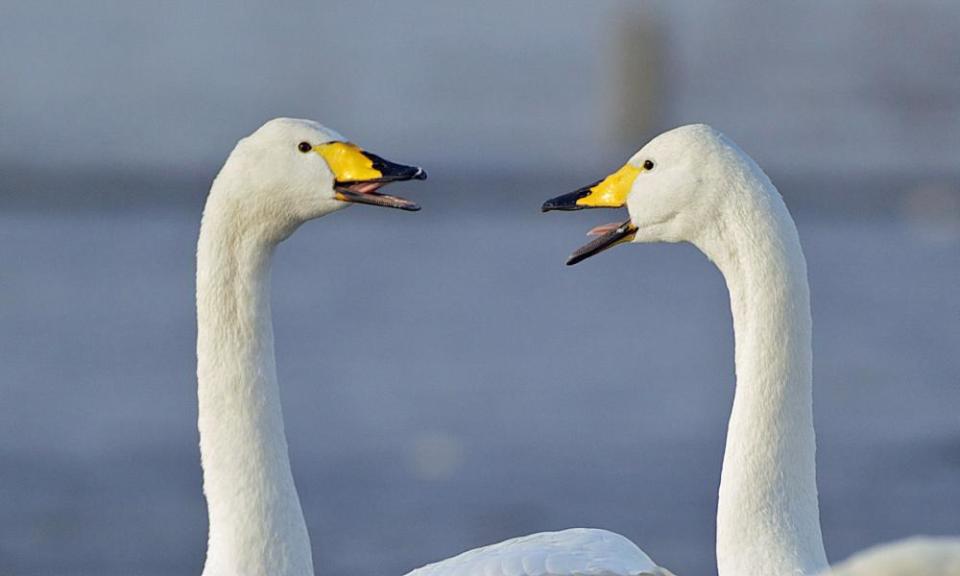Country diary: the whoopers of Lough Beg are unlike most you’ll see this autumn

The Strand is a swathe of grassland made famous by Seamus Heaney’s poetry. It’s part of the floodplain of Lough Beg, the “little lake” pinched off from its much larger neighbour, Lough Neagh. At the end of the soggy Strand is Church Island – they became attached about 80 years ago when the River Bann was dredged. Hidden among the island’s trees is the remnant of a pre-Viking monastic settlement. People have been seeking this significant backwater for escape or restoration for a long time.
But it’s not just people who flee here. Wildfowl come to escape harsher winters elsewhere. I head to Longpoint Wood at the edge of the Strand. Through the wood, I hear the waough-waough of buffeting wings. Those are mute swans, a resident species. Whooper swans, which overwinter in large numbers, have softer wingbeats with a barely-there echo of hiss. More tellingly, they whoop and whoop as they fly. Calling to each other holds the family group tight as they migrate from Iceland.
The trees thin. The open water is rafted with silhouettes of mallard and coot. Among them, throngs of mute swans process with raised wings, irritated. I hear wigeon – so some migrants have arrived; but there’s no sign of the erect neck and sleek form that suggests whooper swan. Then, as I scan along an inlet, I find them. Two adults with yolk-yellow bills, and a brownish-grey juvenile.
Was that juvenile hatched here? The question arises because small numbers of whooper swans have bred at Lough Beg for more than 20 years. Why it should forgo its urge to migrate is unclear. Injury can prompt the behaviour. The Icelandic population is increasing, which could lead to more intense competition for breeding territory. Improved foraging opportunities at wintering sites from changing agricultural practices could reinforce the benefits of range expansion by staying put.
However, migrant whoopers have already reached Lough Foyle, 30 miles north-west. That youngster may have just got here. Alternatively, it may be about to encounter more of its kind than it ever has before.
• Country Diary is on Twitter at @gdncountrydiary

 Yahoo Finance
Yahoo Finance 